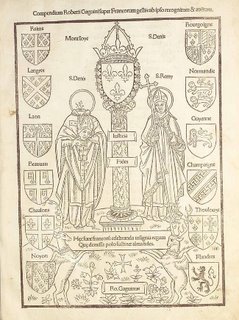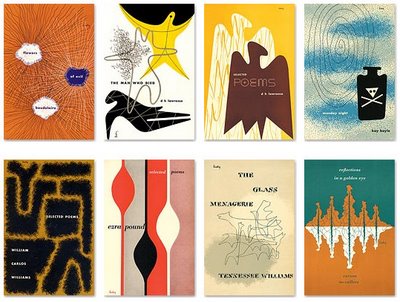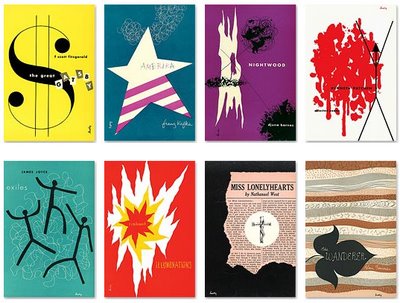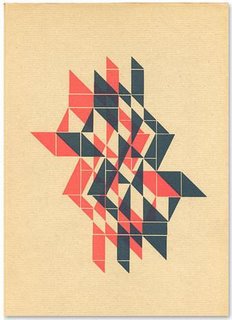








These variations on the Commedia dell'Arte theme from the beginning of the 17th century have been uploaded at full size, after removal of the library stamps. This is the whole set from the Biblioteca Casanatense via the Istituto Internazionale di Storia Economica e Sociale "F. Datini" database. I can't find much more information about the set, Gheyn or van Londerseel online.
Verbatim from the website: "20. B. I. 93, [Raccolta di stampe sec. XVII-XVIII]
editori Jacques Cherau, Assuerus van Londerseel - Calcografie: Jacques Bellange (incisore), Sebastien Leclerc (incisore), A.S. (incisore), Francesco Maggiotto (autore), Jacob de Gheyn II (incisore).
20. B. I. 93/176-183, 185 - [Maschere] - ed. Assuerus van Londerseel, fine XVI - inizi sec. XVII - Calcografie: Jacob de Gheyn II (incisore)
Incisione calcografica (acquaforte) - Tavole sciolte poste in album fattizio."
Saturday, April 15, 2006
The Masks
Friday, April 14, 2006
Smatterings
 This is from a whole love/musical score book which I'll probably
This is from a whole love/musical score book which I'll probablypost again when I find my way back to the complete work.
I think it was at the Library of Congress but..?
 Tiera De Lavrador
Tiera De LavradorA Portuguese anonymous handpainted series of 25
maps covering most known areas of the world in ~1555
at the National Maritime Museum in UK.

 April 2006 sees the 200th anniversary of the birth of English engineering superstar from the victorian era, Isambard Kingdom Brunel (thumbnail gallery). The image here entitled The Paddle Engine Room of the "Great Eastern" is from The Illustrated London News, September 1859.
April 2006 sees the 200th anniversary of the birth of English engineering superstar from the victorian era, Isambard Kingdom Brunel (thumbnail gallery). The image here entitled The Paddle Engine Room of the "Great Eastern" is from The Illustrated London News, September 1859. Compendium de origine et gestis Francorum
Compendium de origine et gestis Francorum Gaguinus, Robertus; Ed. Jodocus Badius Ascensius
~1500. somewhere in the Herzog August Bibliothek.
 Garden architecture - Grohmann, Johann Gottfried.
Garden architecture - Grohmann, Johann Gottfried.Idea magazine for lovers of gardens, English plants
and for owners of landguetern 1797 (ebay)
 Kepler's model to explain the relative distances of
Kepler's model to explain the relative distances ofthe planets from the Sun in the Copernican System.


 The above 2 images are from the Fantastic in Art and Fiction website at Cornell University.
The above 2 images are from the Fantastic in Art and Fiction website at Cornell University. Beschreibung und Abbildung eines ungebornen Elephanten nebst verschiedenen bisher ungedruckten Nachrichten die Naturgeschichte der Elephanten betreffend
Beschreibung und Abbildung eines ungebornen Elephanten nebst verschiedenen bisher ungedruckten Nachrichten die Naturgeschichte der Elephanten betreffendE Zimmerman 1783 somewhere in Braunschwieg University Library.
Click the images for full size or near full size versions. Just a motley bunch collected while fossicking. That unborn elephant image is particularly amazing.
Examples of Chinese Ornament








 [click images for larger versions]
[click images for larger versions]
Examples of Chinese Ornament Selected from Objects in the South Kensington Museum and Other Collections, 1867 by Owen Jones at the University of Wisconsin Digital Library for the Decorative Arts and Material Culture
[100 plates]-[thumbnail page].
Thursday, April 13, 2006
Tanabata Star Festival





[click images for full size versions]
Despite not having monsters (as per the library classification) in the images, I found these delicate early Edo period illustrations to be nonetheless quite exquisite. Completed in ~1660, the 3 volume set has perhaps 25 birdseye view scenes with gold leaf clouding above and below to signify dreaming.
A beautiful daughter of a Japanese Minister dreams that she marries and has a child named Amewakamiko. The father of the child descends to earth during the Tanabata Star Festival and takes the child back to the heavens. Our beauty overcomes this dream-trauma by marrying the Crown Prince and living happily ever after. [I still prefer visual monsters to a Mills & Boon story however].
The images from Amewakamiko are hosted by Japan's Keio University and I think you need a 'SiD' browser plugin to view them in large format, although they do have jpegs available. Click a number for thumbnail views from the respective volumes. The above images are slightly cropped at the top and bottom from the zoom/screen capture.
Alvin Lustig




These eclectic bookcovers are just a sampling of the enduring graphic design legacy left by American allround designer, Alvin Lustig.
Diabetes robbed him of his sight by 1954 and he gave meticulous instructions to his wife, Elaine Lustig Cohen (a formidable graphic artist in her own right) and assistants so that designs could be completed. He died the following year aged 40 years.
The Alvin Lustig website is just excellent. [via]
Planetary Arts




 [click images for larger versions]
[click images for larger versions]
As far as I can deduce, this early 15th century latin/german manuscript is an attempt to symbolically combine or portray astrology/astronomy, teaching and religion. There are only 15 pages and it's worthwhile having a look at them all at the University of Salzburg website (thumbnail page). It's essentially divided into 2 sets of 7 illustrated subjects with a final page that is something of a conclusion or summary. The red writing was likely added later.
The top 2 images above are from the first half of the set and each human figure in the top circle represents one of the 7 planets (which included the sun and moon but not earth). I think the symbols at the side are the predominating astrological forces and the figures below reflect a human age eg. childhood, adulthood etc; which are themselves symbolic of a time of day.
The next 2 images above are from the 2nd set and each represent one of the liberal arts subjects (personified by the female figure) of rhetoric, grammar or astronomy for instance; which are also each aligned with one of the great exponents from history such as Cicero or Euclid etc. The head of Christ is seen in the 2nd last image with a reference to Sacra Theologia or Sacred Doctrine.
The concentric circles in the final image represent the planetary orbits and the brief commentary mentions they also signify chemical elements. Earth is at the centre of the 'universe' and Albertus Magnus is seated below. (Magnus was a 13th century philosopher who was an advocate for a peaceful coexistence between religion and science).
Interesting stuff. If anyone can elaborate or correct anything I'm misunderstanding, please go right ahead.
Tuesday, April 11, 2006
The Heart Bulletin
 The trouble with doctors is not that they don't
The trouble with doctors is not that they don't know enough, but that they don't see enough.
Sir Dominic J Corrigan, 1853
 The mind of man cannot conceive of an effect
The mind of man cannot conceive of an effect without a cause, so that the sight of a phenomenon
always awakens an idea of causation.
Claude Bernard, mid-19th century
 The heart is the beginning of life, even as the sun
The heart is the beginning of life, even as the sun may be called the heart of the world. The heart is
the foundation of life, the source of all action.
William Harvey, 17th century
"Cartoons of red arteries and blue veins illustrate the principles of cardiovascular medicine. These illustrations appeared on the back covers of The Heart Bulletin. The figures underwent a transition over the years, as the artist [Joseph Schwarting] refined his ideas about illustrating medical quotes. The quotes prompting the cartoons came from a variety of philosophers and physicians who pondered cardiovascular theory through the centuries."Illustrations from the Heart Bulletin (1952-1968) are online at John P. McGovern Historical Collections and Research Center, Texas (4 thumbnail pages with ~100 images total).














































